Getting started with your investing journey can present a lot of consternation: what to invest in, how to invest in stocks and which stock trading or investing apps should beginners use to avoid becoming overwhelmed? Thankfully, with the advent of FinTech services, many stock trading brokers offer beginners access to the stock market for no cost and with easy-to-understand interfaces.
This list walks through the best stock trading apps and platforms for beginners and up. While we prize no commissions, we more want to focus on providing the best overall user experience that aligns with this site’s overarching aim: building long-term wealth. That often means investing in low-cost index funds you plan to hold for long periods of time.
Take a look below at the best stock trading apps for beginners to consider opening and using to trade stocks and ETFs. We highlight the best stock trading app for beginners and best stock app to start investing first.
Best Stock Trading Apps for Beginners: E*Trade + Betterment
Best Stock Trading Platforms for Beginners
| App | Apple App Store Rating + Best For | Fees | Promotions |
|---|---|---|---|
 E*Trade E*Trade | ☆ 4.6 / 5 Beginning-to-intermediate traders | No-commission stock and ETF trades | Account bonus commensurate with contributed funds ($50 - $6,000 in value) |
 Betterment Betterment | ☆ 4.7 / 5 Building a globally-diversified portfolio | $4/mo., but changes to 0.25% annual AUM fee if you set up recurring monthly deposits totaling $250, or reach a balance of at least $20,000 across all Betterment accounts. Premium: 0.65% annual AUM fee | None |
 Robinhood Robinhood | ☆ 4.2 / 5 Basic stock and ETF investing; options | No-commission stock and ETF trades | Bonus stock with funded account |
 Webull Webull | ☆ 4.7 / 5 Self-directed investors and intermediate traders | No-commission stock and ETF trades | 20 bonus stocks worth $60 - $60,000 |
 CIBC CIBC | ☆ 4.3 / 5 Best for Canadians | U.S. and Canadian stocks, ETFs, and mutual funds: $6.95 per trade for investors (150 or fewer trades per quarter); $4.95 per trade for active traders (150+ trades per quarter). Money market mutual funds: $0. Mutual funds: $6.95. Options trades also include a $1.25 contract fee.** | 100 free online stock and ETF trades with new eligible account and up to $15,000 cash back with transfer from outside account into Investor’s Edge account.*** |
 J.P. Morgan Self-Directed Investing J.P. Morgan Self-Directed Investing | ☆ 4.8 / 5 Self-directed investors and Chase customers | No-commission stock and ETF trades | Account bonus commensurate with contributed funds |
 Public.com Public.com | ☆ 4.7 / 5 Social theme-based investing interests | No-commission stock and ETF trades | None |
 moomoo moomoo | ☆ 4.6 / 5 Advanced traders | No-commission stock and ETF trades | 15 bonus stocks |
 Acorns Acorns | ☆ 4.7 / 5 Automated investing | $3/month - $12/month | $20 bonus when you set up recurring investments and make your first successful recurring investment |
 SoFi Invest® SoFi Invest® | ☆ 4.8 / 5 Active trading and robo-investing | No-commission stock and ETF trades | Bonus stock worth up to $1,000 |
 M1 Finance M1 Finance | ☆ 4.7 / 5 Passive investors Fee-free active trading and automated investing | No-commission stock and ETF trades | None |
| * Apple App Store Rating as of Oct. 8, 2025 | |||
1. E*Trade (Best for Beginner-to-Intermediate Traders)
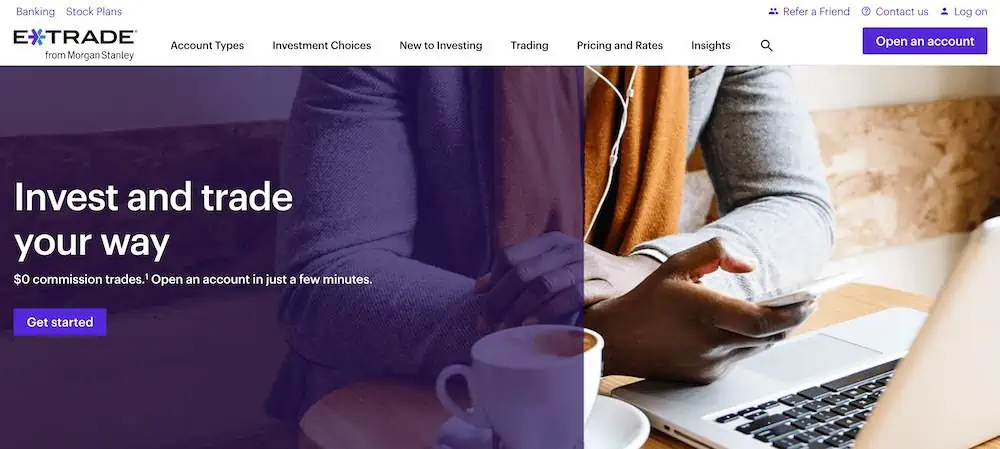
- Available: Click the “Get Started” button below
- Best for: Beginner-to-intermediate investors
- Platforms: Web, mobile app (Apple iOS, Android)
E*Trade has long been seen as a leading stock trading app for retail investors. E*Trade provides investors access to educational resources that assist you with conducting investment research and analysis and diversifying your portfolio.
E*Trade, like most of the best stock trading apps, offers zero-commission stock, ETF, and options trading. It also has a leg up on some platforms by offering $0-commission mutual fund trading. Options still incur a 50- to 65-cent contract fee, however. Meanwhile, bond trades are $1 apiece, and future trades are $1.50 per contract per side, plus other fees.
E*Trade has two platforms, both of which are free, and both of which have web and mobile versions:
Power E*Trade
Power E*Trade is designated for more intermediate-to-advanced traders. Features include:
- Advanced charting that includes intraday and historical options; more than 100 studies; over 100 drawing tools; and the ability to automatically identify technical patterns
- Snapshot Analysis, which lays out risk-reward probabilities in your options trading
- Powerful stock and trade scanner; use preset filters or customize as you wish
- Paper trading to test out strategies without putting your money at risk
- Ability to design exit strategies
Like with the Power E*Trade web platform, the Power E*Trade app is a more powerful version of its basic counterpart. This app allows you to use preset scans, work with interactive charts, place complex options trades, and more.
E*Trade
The “basic” E*Trade web platform might be more suitable for beginning-to-intermediate traders and investors, but that doesn’t mean it’s short on features.
E*Trade’s main web platform includes everything you need to keep up to date on your portfolio, including real-time quotes, charts, market commentary, and stock news. The latter includes free access to Thomson Reuters and TipRanks research. Meanwhile, you’ll have ample tools at your disposal, including stock, mutual fund, bond, and ETF screeners; trade optimizers; backtesters; and more.
E*Trade also touts its educational resources, which includes articles, videos, and classes, as well as monthly webinars and live events. But we will note that its educational content is difficult to sort through.
E*Trade Pro
E*Trade does have a third platform, which it doesn’t even openly promote, called E*Trade Pro. This is a more advanced trading platform for active traders that boasts even more powerful tools to research and trade stocks and options. To get E*Trade Pro, you’ll need to call the broker and establish that you’re going to be an active trader (10 or more trades per month) and are going to fund your account with at least $25,000. E*Trade will then sync up your account on the back end to provide you access with E*Trade Pro.
For a limited time, E*Trade offers a new account funding bonus (when you use reward code “OFFER25”) in the following amounts:
- $50-$999 earns $100
- $1,000-$19,999 earns $150.
- $20,000-$99,999 earns $300.
- $100,000-$199,999 earns $600.
- $200,000-$499,999 earns $800.
- $500,000-$999,999 earns $1,000.
- $1,000,000-$1,499,999 earns $3,000.
- $1,500,000 or more earns $5,000.
To open a free E*Trade custodial account, click “Open Account” below.
2. Betterment (Best Investment App for Tax-Loss Harvesting + Automated Investing)

- Available: Click the “Get Started” button below
- Best for: Set-it-and-forget-it investors
- Platforms: Web, mobile app (Apple iOS, Android)
If you’re a fan of diversifying your portfolio with ETFs, a Betterment account could be a good choice. This robo-advisor platform allows you to invest in a narrow series of low-cost ETFs with different themes and purposes. For instance, you could choose to invest in its Social Impact or Climate Impact portfolios if you care deeply about social justice or the environment. Betterment also offers crypto-focused ETFs for investors interested in decentralized finance, including an ETF specifically focused on the metaverse.
Although Betterment is a robo-advisor, it does offer access to human advisors, too. This is a big plus to me—I’m a self-directed investor, but even if I convinced myself to lean on a robo-investor, I’m the kind of person who wants to learn what I can, and I’d prefer to be able to receive guidance from a financial pro. This sets Betterment apart from many other competing robo-advisors.
Alternatively, though, Betterment is primarily a robo-advisor, so this isn’t the best choice for hands-on investors.
While Betterment accounts (individual and joint taxable brokerage accounts, and Traditional, Roth, Inherited, and SEP IRAs) do have a minimum required deposit, it’s tiny, at just $10. Betterment does charge fees, however. Its accounts start at $4 a month, but that changes to a 0.25% annual fee if your balance is more than $20,000, or if you set up recurring monthly deposits that total $250 or more. Also, you can upgrade to Betterment Premium for an additional 0.15% add-on fee to receive on-demand support from a Certified Financial Planner™. Upgrading requires a $100,000 minimum balance required in cash, stocks, bonds, or crypto holdings.
The assets under management (AUM) fee might justify itself in taxable brokerage accounts through Betterment’s tax-loss harvesting feature. It works by selling positions with losses to lock in short-term capital losses and can both offset realized capital gains and potentially lower your taxable income up to $3,000 per year (any unused loss rolls over to future years indefinitely) while taking your proceeds and placing them into a similar investment. As you can see, by lowering your tax impact, the service can pay for itself.
Betterment led the way for robo-advisor services, growing from a small business to what now represents a significant book of business. Using Betterment has become a popular choice for people looking to invest toward specific goals without the need for any investing experience for a reasonable fee.
Visit Betterment’s site by clicking “Get Started” below to see if it’s the right fit for you.
- The Betterment app gives you the tools, inspiration, and support you need to become a better investor.
- Start with as little as $10 and use the top-rated mobile app to set up automatic investing into diversified ETF portfolios.
- You can also invest in diversified preset cryptocurrency portfolios.
- Customize your risk tolerance and investment goals with guidance available at any time.
- By upgrading to Premium, you can unlock unlimited financial guidance from a Certified Financial Planner™.
- Hands-off investment management
- Diversified portfolio that automatically rebalances
- Low-cost investment selection
- Limited investment selections
- Limited crypto diversification in cryptocurrency portfolios
Related: Federal Tax Brackets and Rates [2023 + 2024]
3. Robinhood (Best Stock Trading App for Beginners)
- Available: Sign up here
- Best for: Beginner traders
- Platform: Web, mobile app (Apple iOS, Android)
Robinhood is a pioneer of commission-free trading, jumping into the investing public’s consciousness in 2013 when they rolled out commission-free trading. They remain a standout option for cost-minded investors thanks to their continued $0 commissions on stocks, ETFs, and options, as well as for its fractional trading, which allows people to invest with as little as $1.
More importantly, though, Robinhood has evolved from a bare-bones app appealing to mostly beginner investors to a fuller-featured account suitable for a wider range of experience levels.
For instance, Robinhood now offers individual retirement accounts (IRAs) and Roth IRAs via Robinhood Retirement. Functionally, it comes up short compared to many other IRA providers because of its investment options. It offers just stocks and ETFs; like with its brokerage account, mutual funds aren’t available. Options aren’t currently available, though Robinhood has explicitly stated that options will be made available soon.
However, Robinhood Retirement still stands out from the pack because it’s the only IRA provider that offers matching funds. If you open up an IRA with Robinhood Retirement, Robinhood will match 1% of any IRA transfers, 401(k) rollovers, and annual contributions to your account—and 3% if you pay for the Robinhood Gold service ($5 per month)—typically almost immediately after you make your contribution. Better still: Any matches made on annual contributions don’t count toward your contribution limit.
(Friendly message from your Young and the Invested tax expert: The reason the IRA Match doesn’t count toward your annual IRA contribution limit is because Robinhood treats it as interest income in your IRA.)
You can choose your IRA investments yourself, but Robinhood’s Portfolio Builder can also provide you with a custom recommended portfolio made up of five to eight ETFs.
Robinhood Gold, which I mentioned above, is a monthly subscription service that offers several more features mostly geared toward advanced traders. Benefits include Level II market data provided by Nasdaq, a lower charged rate on margin investing than regular accounts, higher interest on uninvested brokerage cash via the cash sweep program, and bigger Instant Deposits.
Sign up for a Robinhood brokerage account or Robinhood retirement account today. Robinhood investment accounts carry up to $500,000 of Securities Investor Protection Corporation coverage.
- Robinhood is a pioneer in the investing app world, offering commission-free trades on stocks, ETFs, options, and cryptocurrency, as well as one of the deepest libraries of investing educational content.
- Investing for retirement? Robinhood will match 1% of any IRA transfers or 401(k) rollovers, as well as any annual contributions*, made to your Robinhood Retirement account—and you can get a 3% match on any new contributions if you subscribe to Robinhood Gold.
- Want more advanced trading tools? Download Robinhoold Legend—a desktop trading platform with real-time data, customizable layouts, deeper asset analysis, and more—for free.
- Robinhood's robo-advisory service, Robinhood Strategies, will build you a custom portfolio of stock and bond ETFs (and individual stocks for accounts with at least $500), for a low 0.25% in AUM, which is capped at $250 annually for Robinhood Gold members.
- Robinhood Gold also includes Level II market data provided by Nasdaq, higher interest rates on uninvested brokerage cash, lower margin trading rates, bigger Instant Deposits, and access to the Robinhood Gold Card (a 3% cash-back Visa credit card).
- Special offer: Sign up for Robinhood, link a bank account, and fund your account with at least $10, and receive a randomly selected cash amount between $5 and $200 to put toward certain fractional shares.
- Very good selection of available investments in brokerage accounts
- 1% match on rollovers, IRA transfers, and new contributions to IRAs and Roth IRAs (3% new-contribution match with Robinhood Gold)
- Automated recommended portfolios
- Intuitive interface
- Robo-advisory service (Robinhood Strategies)
- Extensive educational library
- No mutual funds in brokerage or IRAs
- Match doesn't apply to Robinhood Strategies accounts
Related: Best Stock Screeners + Stock Scanners
4. Webull (Best Stock Trading App for Intermediate Traders)
- Available: Sign up here
- Best for: Self-directed investors and intermediate traders
- Platforms: Desktop app (Windows, Mac, Linux), web, mobile app (Apple iOS, Android)
Webull first hit the investing world in 2018 and made a splash by offering free stock trading, as well as commission-free trading of exchange-traded funds (ETFs) and options. And since then, it has become one of the best stock trading apps for intermediate traders, though many of its features are helpful to beginner investors as well.
For one, Webull remains friendly to wallet-conscious traders today. It costs nothing to open a Webull account. Stocks, ETFs, and options still trade commission-free. Many options have $0 contract fees. And Webull has no deposit minimums. On top of that, it offers fractional shares, which allows investors to start buying for as little as $1.
Webull also is available across just about every platform, allowing you to research, trade, and track your stocks on your smartphone, tablet, or desktop.
Why choose Webull to trade stocks?
Webull provides traders with a number of useful features and tools, including:
- Customizable screeners for both stocks and ETFs
- Preset lists–including Top Gainers, Top Losers, Most Active, and Best-Performing Industries—traders can use to identify opportunities
- Free real-time stock quotes
- 12 charting tools and more than 50 technical indicators
- Real-time stock alerts you can set to notify you of events such as significant price action or certain technical conditions
- Numerous order types—simple orders such as limit and market orders, sure, but also group orders such as bracket, OTO, and OCO orders
- Quant ratings that help you to evaluate stocks through numerous lenses, such as growth, value, income, quality, and momentum
These tools make Webull one of the best stock research and analysis apps for traders.
Also noteworthy: Webull provides one month of free Level 2 Quotes powered by Nasdaq TotalView. Per Webull: “It provides the best 50 levels of bids and asks for all NASDAQ-, NYSE- and regional-listed stocks on NASDAQ Market Center. It includes the prices and quantities of displayed quotes and orders, allowing investors to better determine the availability or demand for a stock at a certain price.” Experienced day traders can use these quotes to try to determine where the stock market is headed in the very short term. (Note: Level 2 Quotes cost $2.99 per month after the free trial.)
And traders can even get paid for stocks they’re sitting on. Webull’s Stock Lending Income Program allows you to receive interest, accrued daily and paid monthly, for allowing Webull to borrow certain stocks. The interest rate varies widely depending on demand for a particular stock.
Webull also has a couple other fun (and still useful!) features. For instance, you can set up voice commands that will allow you to simply speak to buy, sell, or look up information on a ticker. There’s also “Big Button Mode,” which, as you’d guess by the name, populates giant buttons on your screen that allow you to quickly make trades with just a push.
We’ll point out that while Webull allows for many types of commission-free trades, other costs will still apply to a few transactions. For instance, a 55-cent contract fee applies to certain options trades. Webull doesn’t directly charge fees for trading cryptocurrencies, but it does build a 1-percentage-point markup into the price of cryptocurrency when you buy or sell crypto. And Webull’s margin rates, which are variable depending on the debit balance, are currently roughly middle-of-the-road.
You should also know that you can’t buy mutual funds on Webull, though that’s more of a concern for long-term investors and less so for traders.
Regardless, Webull remains one of the best, and most cost-friendly, trading platforms you can come across. And on top of all the free features mentioned above, Webull also runs frequent promotions that allow investors to collect free stocks.
Read more in our Webull review, or sign up at Webull today.
- Webull is a low-cost trading and investing app that allows you to invest in stocks, ETFs, options, futures, commodities, and crypto, and even participate in initial public offerings (IPOs).
- No-commission stock, ETF, and option trades (and many options have $0 contract fees).
- Trading features such as charting tools, technical indicators, customizable screeners, real-time stock alerts, and group orders.
- Let Webull manage your money for you with Webull Smart Advisor, which combines Webull's in-house investment expertise and artificial intelligence to build, manage, and rebalance an ETF portfolio for you.
- Sign up for Webull Cash Management to earn up to a 4.1% APY on uninvested cash.
- New users get one free month of Nasdaq TotalView's Level 2 Quotes service. (That subscription costs $2.99/mo. thereafter.)
- Subscribe to Webull Premium and receive a premium APY on uninvested cash in individual and joint cash accounts, premium margin rates, a 3% match when you transfer or roll over your IRA, and an extra 3.5% match on qualifying IRA contributions.
- Special offer: Make an initial deposit of at least $2,000 and receive 1.) a $100 cash bonus, 2.) a 2% match of your deposit (up to a maximum bonus of $20,000), 3.) a 30-day voucher for Webull Premium, 4.) a 30-day 4.0% APY booster on uninvested cash (for a total of 8.1%).**
- Good selection of available investments
- Fractional shares
- Powerful technical analysis tools
- Offers robo-advisory services
- Accessible to beginning and intermediate users
- Voice commands
- Offers highly competitive APY through Webull Cash Management
- Does not support mutual funds
Related: 15 Best Investment Apps [Free + Paid]
5. CIBC Investor’s Edge (Best for Canadians)
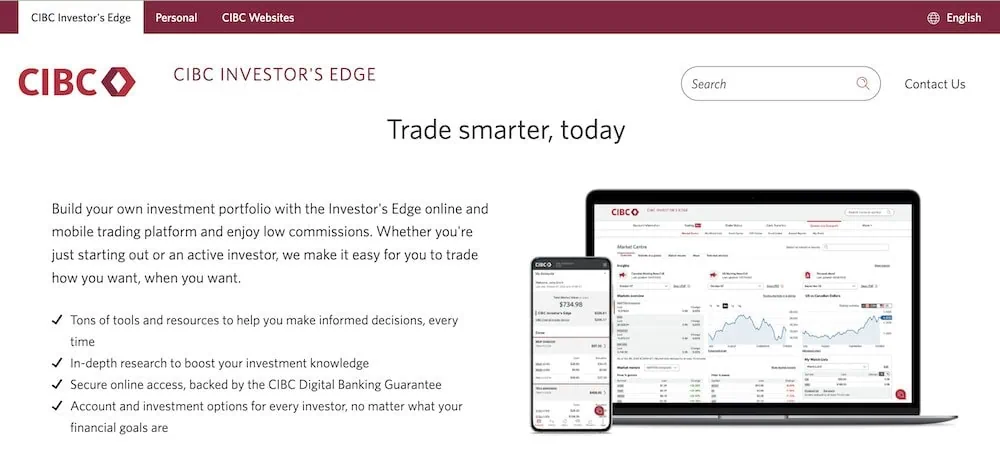
- Available: Sign up here
- Best for: Beginner to intermediate investors
- Platforms: Web, mobile app (Apple iOS, Android)
CIBC Investor’s Edge is a workhorse online broker that provides a satisfying experience for investors across the proficiency spectrum while charging relatively modest and transparent fees.
Investor’s Edge allows you to trade not only U.S. and Canadian stocks and ETFs, but also options, mutual funds, and bonds. And you can do so from non-registered accounts, as well as a variety of registered accounts, including FHSAs, TFSAs, RRSPs, RESPs, and more.
The Investor’s Edge platform also provides a variety of screening and charting tools, analyst reports, customizable watchlists and alerts, Regular Investment Plans, and more. You can also stay informed and up to date through CIBC’s investor learning center—which includes topics such as Investing 101, How to Trade Options, and (as you’d expect) how to trade using the Investor’s Edge platform—as well as expert videos and webinars, and various newsletters.
Note that, in addition to flat commission fees (listed below), CIBC Investor’s Edge does sometimes charge an account fee. Specifically, you’ll pay $0 when the balance of all CIBC Investor’s Edge accounts is greater than $10,000, but $100 annually if the balance is $10,000 or less. That said, CIBC requires no minimum account balance.
And CIBC is a screaming deal for younger investors. Anyone age 18 to 24 can start trading stocks and ETFs online for free—no annual fee, and no commissions—if they first open a CIBC Smart Account with CIBC Smart Start.
Whether you’re looking to get started, or are an experienced investor who just wants to lower their commissions, check out CIBC Investor’s Edge today.
- CIBC Investor's Edge is a straightforward, easy-to-use brokerage platform that allows access to a variety of investments—including stocks, ETFs, options, mutual funds, bonds, and more—at reasonable and transparent costs.
- Modest commissions. U.S. and Canadian stocks, ETFs, and mutual funds: $6.95 per trade for investors (150 or fewer trades per quarter); $4.95 per trade for active traders (150+ trades per quarter). Money market mutual funds: $0. Mutual funds: $6.95. Options trades also include a $1.25 contract fee.**
- Available account types include: Non-registered, FHSA, TSFA, RRSP, RESP, RRIF, LIRA, LRSP, LRIF, PRIF.
- Suite of investing and trading tools includes screening, charting, watchlists, alerts, news, education center, and more.
- Special offer: Clients can get 100 free online stock and ETF trades when they open a new eligible account and up to $15,000 cash back when they transfer funds from outside CIBC to their new or existing Investor’s Edge account.***
- Very good selection of available investments
- Large selection of registered accounts
- Modest commissions
- No minimum account balance
- Trading tools not as advanced as many other competitors' offerings
- $100 annual fee for low-balance accounts
Related: How to Get Free Stocks for Signing Up: 10 Apps w/Free Shares
6. J.P. Morgan Self-Directed Investing (Best for Self-Directed Investors + Chase Customers)
- Available: Sign up here
- Best for: Self-directed investors, Chase customers
- Platforms: Web, mobile app (Apple iOS, Android)
J.P. Morgan Self-Directed Investing acts as an investing solution offered from Chase and is accessible through the Chase Mobile® app or Chase.com.
You can use this investing app to make unlimited commission-free trades in thousands of investment options, including a wide range of stocks, ETFs, fixed income, mutual funds and options.
The investing app allows you to utilize tools to build your portfolio including screeners and watchlists—both useful for building diversified portfolios and staying on top of market activity.
The app provides personalized news and J.P. Morgan Research and market analysis to empower informed investment decisions. You can leverage these resources to design your own target allocation for your investments.
Consider using J.P. Morgan’s Self-Directed Investing platform if you’d like the flexibility to invest as much as you want without paying any commissions on equity and options trades. Some regulatory fees and fund expenses may apply.
You can choose an account that’s right for you: an individual taxable account, Traditional IRA or Roth IRA. All carry a $0 minimum.
Open your J.P. Morgan Self-Directed Investing account today and get up to $700 when you open and fund an account with qualifying new money:
- $700 when you fund with $250,000 or more
- $325 when you fund with $100,000-$249,999
- $150 when you fund with $25,000-$99,999
- $50 when you fund with $5,000-$24,999
Learn more by visiting J.P. Morgan Self-Directed Investing’s website to see if it’s the right fit for your needs.
- J.P. Morgan Self-Directed Investing delivers unlimited commission-free online stock, ETF, mutual fund, fixed-income, and options trades.
- Choose an account that's right for you: General Investing, Traditional IRA or Roth IRA.
- Access your account through the secure, easy-to-use trading experience online or through the Chase Mobile® app.
- Use J.P. Morgan's powerful tools and resources to help you take control of your investment.
- Special offer: Open an account today and earn a cash bonus of between $50 and $700 when you open and fund an account with qualifying new money.*
- Better-than-average commission-free asset selection (includes mutual funds and Treasury bonds)
- Multiple investment account types
- Integration with other Chase banking accounts
- Extremely smooth and intuitive mobile experience
- Limited research and other investing tools
- Must have at least $2,500 in your account to use Portfolio Builder tool
Related: 12 Best Charting Apps [Free + Paid Software Options]
7. Public.com (Best Stock App With Alternative Assets)
- Available: Sign up here
- Best for: New investors with limited capital
- Platforms: Web, mobile app (Apple iOS, Android)
Public.com is a commission-free investing app, geared toward Millennials and Gen-Zers, that as of late has built up the types of assets available to its users. On Public, users can invest in not just stocks and ETFs, but also more than 25 different cryptocurrencies—and more recently, alternative assets from art to sneakers.
That last point is worth a callout. Alternative assets are a relative rarity among investing apps. They can be difficult to research (and thus difficult to properly invest in), but they can provide uncorrelated returns compared to the stock and bond markets, so many savvy investors like to diversify into these assets.
But while the number of tradable assets on Public.com is growing, it’s still somewhat limited: It doesn’t offer mutual funds, options, bonds, or futures. New users are also limited to individual brokerage accounts.
The “Public” part of the name nods at the platform’s social aspect. For one, you can make your portfolio holdings open to other users, and conversely, you can look through other Public users’ portfolios. Investors can also connect with corporate founders and CEOs through live “Town Hall” meetings.
Public also acts as a micro-investing app, allowing you to invest in fractional shares with as little as $1.
Users can also upgrade their experience with the $10/month Public Premium subscription.
Public Premium offers some features that are included in some discount brokers’ services, but other features help to justify the cost. For instance, Premium offers extended-hours trading (8 to 9:30 a.m., and 4 to 8 p.m. EST) and stock price alerts—several competitors, such as TradeStation and E*Trade, offer these services at no charge. However, Premium also provides:
- Advanced data on companies—Public.com’s examples include Tesla quarterly deliveries by model or Apple’s annual sales by continent
- Institutional-grade research provided by Morningstar
- Members-only analysis about events including major economic report releases, earnings announcements, and more
- Exclusive audio programming by Public.com’s expert analysts
What makes Public.com different?
Unlike other free stock trading apps found on this list, Public.com does not monetize its trading activity through receiving payment for order flow (PFOF). PFOF, in brief, is money that a market maker pays a brokerage firm for routing trades through that market maker.
Some investors have called out this practice as harmful to everyday investors, providing them with worse trade-execution prices than they would otherwise get—and this call grew louder amid the GameStop market mania in early 2021. In the wake of this event, Public.com announced a change in its revenue model, breaking with how many free stock apps generate income. Instead, it makes money off interest on cash balances, securities lending, and even tipping—users can choose to (but are not required to) tip Public when submitting trade orders. Public also will make money off its Premium subscription product.
By doing this, Public.com believes it’s better aligning its financial incentives with the best interests of its customers.
Read more in our Public.com investing app review.
For Public.com disclaimer, please see the fine print at the bottom of this article.
- Public.com offers zero-commission trading on thousands of stocks and ETFs, available as fractional shares. The app also allows you to invest in cryptocurrency, options, and bonds as well, and it's one of the rare brokerages that allows its users to buy alternative assets.
- Lock in a 5.3% yield with Public.com's Bond Account, which allows you to invest in a diversified portfolio of investment-grade and high-yield bonds.
- Use a social feed where members can share why they believe in certain companies (or don't) and can post comments on others' trades.
- Invest in curated lists of stocks and ETFs for people to aggregate investments by interest area or values.
- Subscribe to Public Premium for features such as advanced company-level data, Morningstar insights, and exclusive audio content from Public.com's expert analysts.
- Special offer: Receive an uncapped 1% match on transfers into a Public IRA.
- Fractional shares
- Good selection of investible assets
- Allows you to trade alternative assets
- No payment for order flow (PFOF)
- Creative social investing features
- Doesn't support mutual funds
- Limited investment research and other tools
Related: Best Free Investing Apps
8. Moomoo (Stock Trading App With Low Margin Rates)
- Available: Sign up here
- Best for: Advanced traders
- Platforms: Desktop app (Windows, Mac), web, mobile app (Apple iOS, Android)
Moomoo is a commission-free trading platform for stocks, ETFs, and options. While Moomoo is best for advanced traders, offering powerful tools to empower your trading insights and strategies, it takes a different approach from other similarly targeted platforms, favoring simple interfaces and high ease of use. The desktop platform is highly customizable, while the mobile app is straightforward, allowing you to search for stocks and trade with minimal hassle.
Still, Moomoo has more than enough under the hood for advanced traders to get the job done. Its charting system, for instance, includes 62 technical analysis indicators and 22 drawing tools. You can set up alerts based on changes in price, bids, turnover ratio, and more. Free Level 2 market data helps you get a greater understanding of a stock’s value, determine how liquid a stock truly really is, and better time your trades. You can even enjoy 24/7 financial news handpicked by Moomoo’s editorial team. The trading platform provides these features to empower investors to make better investing decisions.
One Moomoo feature worth noting is its mobile charting, which allows traders to take advantage of more than 60 investing indicators and 38 drawing tools. And any drawings or annotations you make are saved and synced with your profile so you can view them from either the app or your desktop.
While Moomoo isn’t as suitable to beginner traders as some of the other apps on this list, the trading platform does include some useful educational tools. For instance, paper trading functionality with real-time data simulates the investment experience without committing any of your real money. (This feature is also helpful to advanced traders, allowing them to test out strategies and hone their skills.)
Moomoo also boasts relatively low rates for trading on margin. The annualized interest rate on financing, as of this writing, is 6.8%—one of the most competitive rates among its peers.
The app pays you for giving it a spin by offering free stocks when you make a qualifying deposit after signing up. Specifically, you can get free stocks if you sign up for a Moomoo account and make a qualifying deposit.
If you want a professional-grade system for research and trading, but with a simpler user experience, Moomoo is among the best trading platforms to consider.
For Moomoo disclaimer, please see the fine print at the bottom of this article.
- Moomoo is an all-in-one investment app geared toward stock, ETF, and options traders who want to work with real-time market data at the ready.
- The service offers free Level 2 market data, offering more insight into the trading activity below the NBBO surface shown on many financial data sites.
- Use the service's powerful stock charting software capabilities to find trading opportunities.
- Get a great return on uninvested cash: Moomoo currently offers a 4.1% APY from its cash sweep program, though current promo offers 8.1% for a limited time.
- Special offer: New users get up to $1,000 in free NVDA stock when they sign up using our link and make a qualifying deposit,* as well as a three-month APY boost (to a total 8.1% APY on uninvested cash).
- Additional special offer for transfers: New customers who transfer assets into a Moomoo account can also receive a 3% match on their transfer up to $20,000 (for a reward cap of $600). New users who transfer in $50,000 or more and maintain for three days will also receive two suite tickets to a New York Mets game.
- Free Level 2 market data
- Free powerful stock charting software
- Free paper trading
- Low margin rates
- Fewer features than peers
- No robo-advisor functionality
Related: 13 Best Stock & Investment Newsletters for Inbox Alpha
9. Acorns (Invest Simply With Pre-Built ETF Portfolios)
- Available: Sign up here
- Best for: Investors looking for simple, automated investing
- Platforms: Web, mobile app (Apple iOS, Android)
Acorns is a micro-investing app geared toward minors, young adults, and millennials that’s perhaps best-known for its “Round-Ups” program.
With Acorns Round-Ups, the app rounds up purchases made on linked debit and credit cards to the nearest dollar, investing the difference on your behalf. For example, if you purchase a coffee for $2.60 on a linked credit card, Acorns automatically rounds this charge up to $3.00 and puts the 40-cent difference aside. Once those Round-Ups reach at least $5, they can be transferred to your Acorns account to be invested.
The Acorns investment offering itself is a simple, automated platform that uses pre-built portfolios of ETFs to keep investors exposed to stocks and bonds. While it doesn’t have much to offer intermediate investors who want variety in their portfolios, Acorns’ basic approach makes it one of the best investment apps for beginners.
Here’s more about what you can expect from Acorns’ varying subscription options:
- Acorns Bronze ($3 per month): Includes an Acorns Invest investment account, as well as Acorns Later for tax-advantaged investment options such as Roth IRAs. Also includes Acorns Checking, a bank account that has no account fees, lets you withdraw fee-free from more than 55,000 ATMs nationwide, and Smart Deposit, which allows you to automatically invest a bit of each paycheck into your Acorns accounts.
- Acorns Silver ($6 per month): Everything in Bronze (Acorns Invest, Later, and Checking), plus Premium Education, which are live onboarding sessions covering account setup, Round-Ups, setting up recurring investments, and more; Emergency Fund; and a 25% bonus on Acorns Earn rewards (up to $200 per month).
- Acorns Gold ($12 per month): Everything in Silver plus Acorns Early, which allows you to open a custodial investment account for your child so you can begin investing for them while they’re a minor; custom portfolios that allow you to hold individual stocks; live Q&As with financial experts; a 50% match on Acorns Earn rewards (up to $200 per month); $10,000 in life insurance; even the ability to set up a will for free.
Silver and Gold subscribers also get access to a powerful way to accelerate their savings: Later Match. While most people are aware that employers will sometimes match funds you contribute to your 401(k), “matches” are rare in retirement accounts like IRAs, where there’s no employer to kick in extra cash. However, Acorns itself will match 1% or 3% on new contributions to IRAs for Personal Plus and Premium subscribers, respectively.
Learn more in our Acorns review, or use our link to sign up with Acorns today.
- Acorns allows you to sign up for investment, retirement, and checking accounts for you and your family, learn how to earn more money, and grow your investing knowledge.
- Famous for investing spare change automatically through Round-Ups, this all-in-one financial app helps younger generations start investing earlier.
- Invest in expert-built portfolios made up of diversified ETFs.
- Silver tier includes perks such as a 25% match on Acorns Earn rewards (up to $200/mo.), generous APYs on Checking and Emergency Fund, and live Q&As with investing experts.
- Gold tier includes perks such as a 50% match on Acorns Earn rewards (up to $200/mo.), $10,000 in life insurance, picking individual stocks for your portfolio, a free Acorns Early account, and Acorns Early Invest custodial accounts for children with 1% contribution matches.
- Earn even more with Later Match: Acorns will match up to 1% (Silver) or 3% (Gold) of all new IRA contributions in your first year.*
- Special offer: Get a free $20 bonus investment when you sign up with our link and start making recurring investments.**
- Robo-advisor with affordable fees (on larger portfolios)
- Fixed fee model
- Round-ups
- FDIC/SIPC insurance
- IRA match (Silver and Gold)
- High fixed fees for small balances
- Limited investment selections
- Must subscribe to Gold for any self-directed investing options
Related: Best Acorns Alternatives: Micro-Investing Apps to Use
10. SoFi Invest® (Best for Personal Finance-Focused Investors)
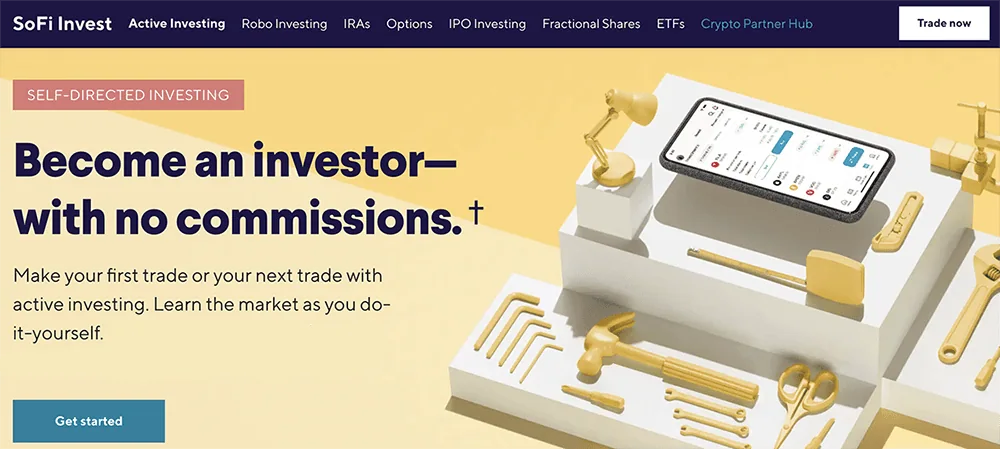
- Available: iOS, Android, Web
- Best for: Traders looking for an all-in-one personal finance experience
- Platforms: Web, mobile app (Apple iOS, Android)
SoFi is a multi-faceted financial company that offers everything from credit cards and insurance to student loans and mortgages … and they also allow you to trade and invest through its SoFi Invest app.
With SoFi Invest, you can invest as actively or as passively as you’d like.
The Active SoFi Invest Brokerage Account has no required minimum balance, charges no commissions on stock, ETF, and options trades, and its options trading has no contract fees, either.
The interface is still very much geared toward younger, less experienced investors—everything is focused on simplicity and ease of use, rather than an expanse of sophisticated tools. SoFi also offers budget-friendly features such as fractional shares, which allow you to invest for as little as $5. And SoFi even provides a social element, such as bringing SoFi members together at exclusive events.
Want to put your portfolio on autopilot? SoFi’s robo-advisory services will create a portfolio for you for an annual 0.25% assets under management fee (that can be designed to address one or several goals) and auto-rebalance it for you as necessary over time.
SoFi also occasionally has sign-up bonuses attached to its brokerage accounts, which you can read more about below. You can also visit SoFi to learn more or sign up today.
- SoFi Invest allows you to trade or invest in stocks, ETFs, and options with no commissions and no account minimums. You can also participate in some initial public offerings (IPOs).
- Invest for as little as $5 with fractional shares.
- Robo-advisory services, including goal planning and auto-rebalancing, available for annual 0.25% AUM fee.
- Subscribe to SoFi Plus to unlock more than $1,000 per year in extra value, including a 1% match on recurring investment deposits, preferred IPO access, higher cash-back rewards on certain SoFi credit cards, a six-month APY boost, and more.
- Special offer: Get up to $1,000 in stock when you open and fund a new Active Invest account.*
- Good selection of available investments
- No options contract fees
- DIY and robo-investing options
- Fractional shares
- No mutual funds
- Limited trading tools
- No tax-loss harvesting
- No socially responsible robo-advisor functionality
Related: 9 Best Robo-Advisors for Investing Money Automatically
11. M1 (Customizable Robo-Advisor for Passive Investors)
- Available: Sign up here
- Best for: Passive investors
- Platforms: Web, mobile app (Apple iOS, Android)
M1 is something of a hybrid between self-directed (you manually choose what to invest in, and determine when to buy and sell) and automated investing (AI helps make decisions for you and manages your account). The result is effectively a highly customizable robo-advisory service—one executed so well that it’s our favorite robo-advisor service.
M1’s investing platform is based around Pies. Your portfolio is represented as a Pie (a pie chart); every stock and ETF you decide to buy becomes a slice of that pie—and because M1 supports fractional shares, you can add virtually any stock or ETF to your portfolio. From there, you set each holding’s “weight”—what percent of your Pie each slice should account for, so, say ETF X will always be 25% of your portfolio, while Stock X should always be just 5%.
After that, whenever you fund your M1 account, it will automatically invest your money based on these targets. You can take the automation even further by setting up recurring deposits into your M1 account.
From there, M1 can automatically rebalance your portfolio for you, or you can go in and manually change how small and large each Pie slice is. If you really want to put it on autopilot, you can invest in M1’s Expert Pies—professionally pre-built portfolios designed for different investment goals. (And if you want something in the middle, you can even combine Expert Pies with your own custom choices.)
One major callout before going any further, however, is that while M1 offers pre-made portfolios aligned to several investing goals, the company is not an advisory service.
Also worth noting is that, unlike traditional online brokers, you cannot trade stocks and ETFs throughout the trading day. At 9:30 a.m. every day the New York Stock Exchange is open, M1 processes all of the orders it has received since the previous trading session.
That’s something of a blessing and a curse. On the one hand, on the rare occasion you would need to jettison a position immediately during the trading day, you couldn’t do that with M1. And that single window is an extreme hindrance to people who want to trade stocks. But for truly buy-and-hold investors, that single window won’t stop you from achieving your goals—and it could actually stay your hand from panic-selling in the middle of the day.
Consider opening an investment account with M1, or read more in our M1 review.
- The M1 investing app is a basic robo-advisory system that acts almost like a 401(k). You build a "Pie" by choosing the stocks and ETFs you want to invest in, as well as the percentage of your portfolio that should be invested in each "Slice," and M1 uses that information to allocate your money each time you contribute.
- If you want help putting together a list of stocks and funds, you can use M1's model portfolios, which cover goals such as general investing, planning for retirement, income earners, and more.
- Enjoy a 4.00% APY on uninvested cash.
- Get a line of credit against your brokerage's account value at low fees (currently 6.40%) compared to other brokerage lines of credit.
- M1 lets you open individual, joint, and custodial brokerage accounts; traditional, Roth, and SEP IRAs; trusts; and cryptocurrency** accounts.
- Robo-advisor with self-directed investing elements
- Attractive APY on uninvested cash
- Borrow against your assets
- Limited selection of investible assets
- Doesn't allow trading throughout the trading day
- Monthly fees for account balances <$10,000
Related: 8 Best Stock Tracking Apps [Investment Portfolio Management]
What Are the Best Stock Trading Apps for Beginners?
In truth, no one app serves every individual person’s needs the same. Some investors choose to follow a more active approach while others would rather a set-it-and-forget style.
While I espouse the latter more so on this site, I don’t necessarily think investing in individual stocks is a bad approach when using research and analysis to guide your decision-making.
In fact, stock advisor services like the Motley Fool’s Stock Advisor and Rule Breakers have shown tremendous outperformance over the last two decades and really represent a significant value for investors looking to rely on others for making stock picks.
Some stock newsletters may even want to practice a more active form of trading and get vetted stock alerts sent directly to their phones to take advantage of market movements.
As long as you account for your risk preferences and level of commitment to following the market, your investment choices will depend on you.
No matter your investing style, when you want to get started investing, you want to look for apps that provide the functionality you want without feeling overwhelmed.
Therefore, the best stock trading app for you depends on your experience, trading goals, and desired level of educational support.
Beginners benefit from apps that have the least amount of fees and a lot of charts, quotes and educational stock research sites. But they also don’t want to get lost in all this distraction if they can’t make sense of the information provided.
The adage of “keep it simple, stupid” usually applies—especially at the start.
Apps that provide a one stop shop for managing your personal finances often act as a great starting point.
This means including your banking and investing needs, but also services that act as the best stock news apps for you to follow the market and learn as you go.
As you develop a better understanding of the market, you’ll want to extend your investing reach into new areas and see if other investing styles suit your needs. Your app should accommodate this.
With that in mind, this list of the best stock trading software platforms for beginners tries to offer simplified investing experiences at the start but ones which can still serve your needs as you grow your investing knowledge.
I try to highlight free apps where possible because investing your money shouldn’t come with charges unless the service provides other value-added products for managing your money.
Related: Best Vanguard Index Funds for Beginners
Related Questions on Stock Trading Apps for Beginners
Below you will find several frequently asked questions related to the best investing apps for beginners.
Can I trade stocks for free?
Traders in the 1980s paid an average of about a quarter per share to buy or sell a stock. The brokerage app Robinhood paved the way and offered traders zero commission stocks. Other companies, seeking to remain competitive, had no choice but to provide the same.
As a result, many apps now avoid charging trading commissions on your trades. Some apps still charge fees but those are the minority. In fact, most investing apps only charge these fees for other value-added services.
After slashing trading costs to $0, you might wonder how these brokerages can afford to make a profit. You might even reason that hidden fees pad these brokers’ accounts. After all, brokerages still need to make money as profit-seeking companies.
Now, most brokers find other ways to monetize their retail traders. They do this by charging interest on margin loans, offer premium services for fee-based subscriptions or one-off services and lend retail trader-owned securities to institutional clients.
For most beginner traders, none of these fees affect you.
Can you invest for free?
Usually, stocks qualify as riskier investments than exchange-traded funds (ETFs) or long-term investments, such as a retirement fund. Luckily, many stock apps allow you to invest in ETFs and retirement funds for free as well.
For example, the stock trading app Webull offers commission-free ETF, stock and options trading. You can use the service to open a Roth IRA, Traditional IRA, or Rollover IRA.
The service does not charge opening, closing or annual account fees. If you wish to add on a subscription to Nasdaq TotalView after your first three months, you can for a nominal $1.99/mo fee.
Be sure the app you choose to trade stocks has no account minimum as you might not have a significant amount of money at the start.
How much money you invest at the beginning doesn’t necessarily correlate to how much money you’ll have down the road. Everyone begins somewhere. So, you might as well not have limits at the beginning with an account minimum.
The investment apps highlighted here avoid an account minimum for trading stocks on their brokerage account options. Some require a minimum deposit for establishing an IRA.
What are the best stock trading apps for beginners?
- Webull
- Robinhood
- SoFi Invest (iOS, Android, Desktop)
- JPM Self-Directed Investing
- Public.com
- Moomoo
- Acorns
- M1
- Stash
- Vanguard
- Betterment
The Best Stock Trading App for Beginners
In the last decade, trading apps have become far simpler and easy to use for investors. While certainly a boon to many, this can also encourage trading more than previous brokerages. Being able to trade without fees, starting with a small amount of money (i.e., low or no account minimum), from the convenience of your smartphone makes stock trading accessible to more people than ever before.
This cuts both ways. As a result, I always espouse a passive investing strategy in low-cost, diversified index funds. The trading platforms above all allow stock and ETF trades at a minimum, the best investment options for beginning investors looking to trade for the first time on powerful mobile app services.
Fortunately, many of the best stock trading apps for beginners allow for both active and passive investing styles. As you mature as an investor, you’ll want investment apps that can meet your needs. Choose one or more stock apps mentioned above to start investing in your future. See which one works best for you.
As you develop your investing experience and skillset, you might upgrade to other brokers who offer stock futures trading, forwards or day trading. However, plain vanilla stock investing is also a great idea if you follow the “keep it simple, stupid” motto.
Moomoo Disclaimer
Moomoo’s parent company is Nasdaq-listed Futu Holdings Ltd (FUTU). Their subsidiaries are licensed and regulated in the United States, Singapore, Australia and Hong Kong.




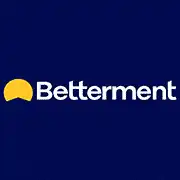
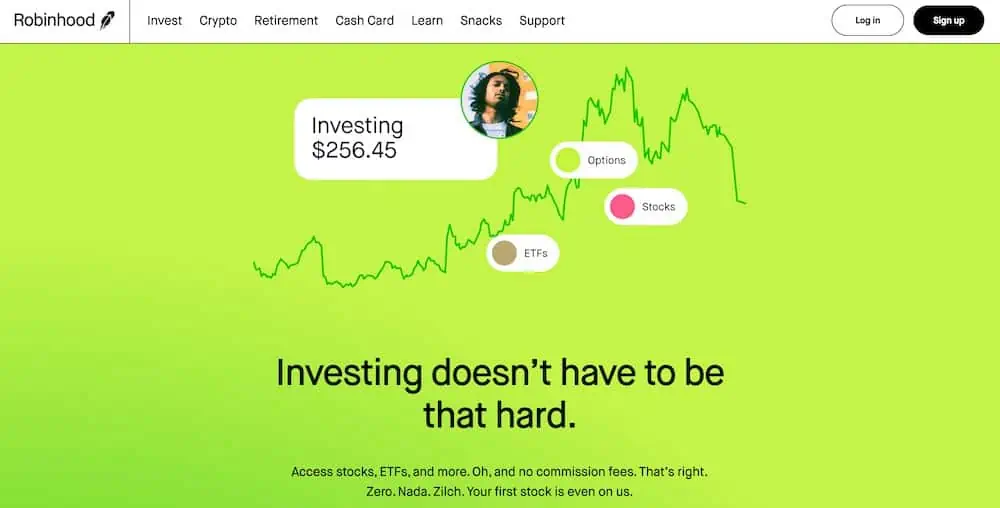

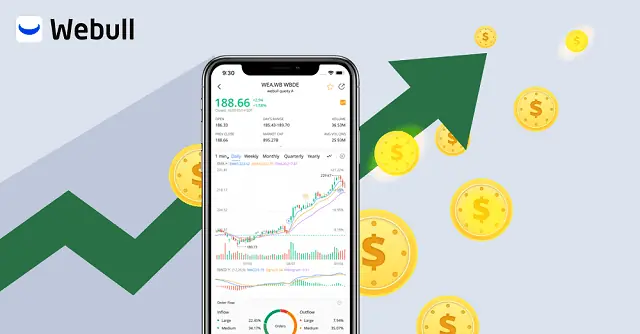




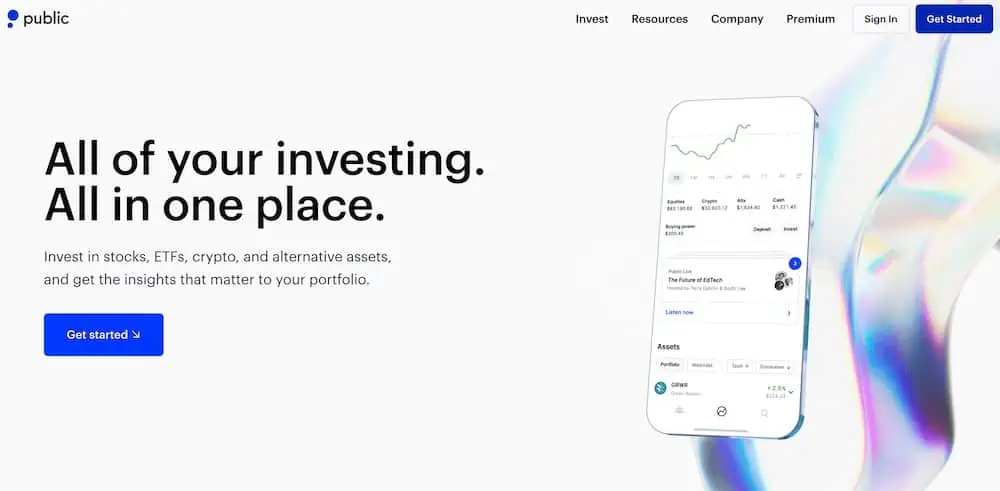





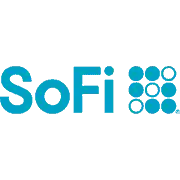
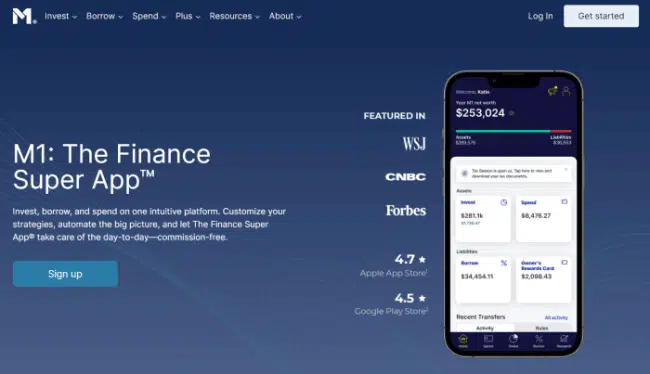

![6 Best Seeking Alpha Alternatives [Competitors' Sites to Use] 66 best seeking alpha alternative](https://youngandtheinvested.com/wp-content/uploads/best-seeking-alpha-alternatives.webp)


